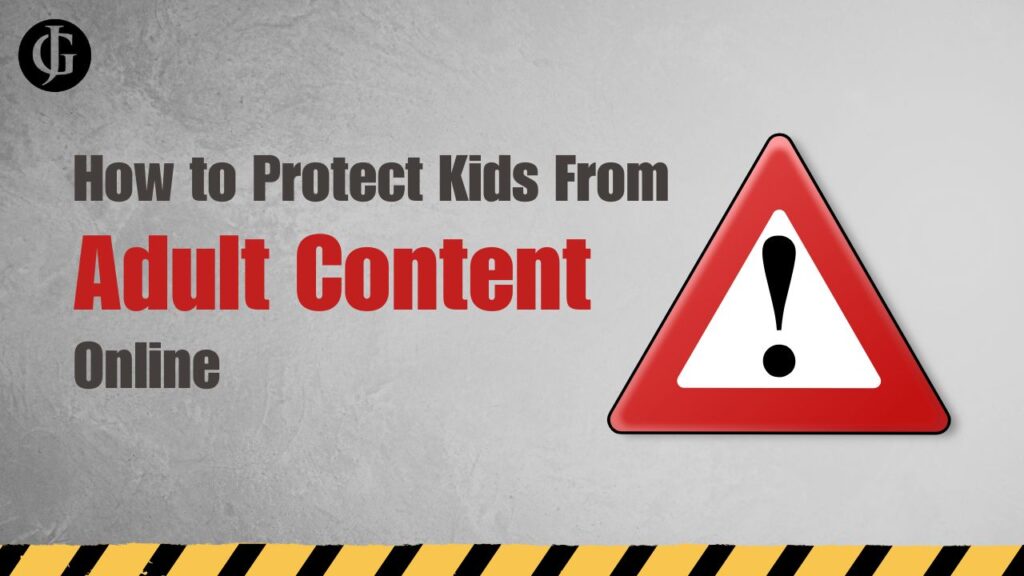How to Protect Kids From Adult Content Online
The internet is a powerful tool in disciplined hands. It has democratized knowledge and enabled anyone to share any message they want with the world. It is so accessible that even a child can use it to get their hands on any piece of public information in the world. Unfortunately, this includes the ability to easily access adult content and malware that can do great harm to their innocence. With the average age of exposure to pornography sitting in the range of 8-13 years old, parents need to take practical steps to protect kids from adult content. After all, on the internet, children are always just a few clicks or a search away from seeing things that it would be better for them not to see.

Personal Anecdote
Let me share a personal story to help illustrate the constant danger that otherwise innocent children are in whenever they use the internet unprotected. When I was younger (probably around 10-13), I was very interested in mythical creatures. I thought dragons, giant spiders, and chimeras (and etc.) were the coolest things ever. I had a book full of mythical creatures from around the world, and one of the creatures in that book was called a nue: a creature with a monkey’s head, a tiger’s limbs, a snake for a tail, and the body of a japanese racoon-dog. I thought it was the coolest thing ever, so I naturally wanted to see more pictures of it than were in the book. So I searched “nue” on google, and navigated to the image results. What I was met with was not pictures of the Japanese mythical creature I was looking for, but rather, sexually explicit pictures of naked women, many of which were from adult content sites. Google gave me results for the search “nude” instead of nue, assuming I had made a typo. Needless to say, I saw things I had never seen before, and I was exposed to sites full of adult content. All of this because I wanted to see pictures of a mythical creature that I thought was cool.
Family-Friendly DNS
Stories like this happen all the time, as children on the internet are never far from adult content and malware. Fortunately, there are a few easy steps parents can take to protect their kids. One of these is using a family-friendly DNS provider. By doing this, you can ensure no devices on your network can successfully make requests to domains that serve adult content, which means those sites are effectively blocked by your network.
DNS stands for Domain Name System, and it is a system that translates human-readable web domains, such as google.com, to the IP addresses of the servers (or networks) that handle requests to those sites. DNS providers are organizations that run domain name servers, which are devices that work behind the scenes to translate the domain you type in the address bar to the IP address of the site you are looking for.
A family-friendly DNS service works just like a regular one, but it refuses to translate domains known to host adult content or malware into ip addresses. This means that any device relying on that DNS server to resolve domain names will be unable to access those sites.
An example of a family-friendly DNS is Cloudflare’s 1.1.1.1 for families. There are two options: one that blocks malware-associated domains (1.1.1.2), and another that blocks access to both malware and adult content (1.1.1.3).
Using a family-friendly DNS service like 1.1.1.3 protects you children
By using a family-friendly DNS such as 1.1.1.3, your children are protected from harmful content. This means that whether their curiosity gets the better of them and they look for adult content on purpose, or accidentally make a bad search or find a malicious link, they will be protected
Setup
Setting up a family-friendly DNS is quick and easy! Begin by logging in to your home’s router. Once you have access to your admin dashboard, you will need to locate the controls for DNS settings (these will vary by router model and version). One there, you will be presented with an option for Domain Name Server IP address or similar. Simply enter 1.1.1.3 into the input, and save the settings.

If there is an option for a secondary DNS, feel free to enter 1.1.1.2, or any other domain name server IP you desire to use as backup.
That’s all there is to it. Once you have saved, you should be unable to access sites known for malware and adult content while connected to your home network. And the best part is, because this configuration is applied at the network level, it automatically applies to all devices on your home network, and cannot be deactivated by anyone who lacks access to your router control panel.
Limitations
While using a family-friendly DNS like 1.1.1.3 goes a long way towards protecting kids from adult content online, it should by no means be considered a comprehensive solution.
For instance, if your child has a device that uses cellular data, the family-friendly DNS setting on your home network will do nothing to protect them. This is because devices with cellular access the internet without using your home network, and as such are free to use different DNS servers that will serve requests to adult content.
Additionally, a VPN installed on the child’s device may allow them to bypass the network-level block to sites that serve adult content or malware. VPNs work by taking requests from a device and relaying them through a VPN server, which will likely not be blocked by the family-friendly DNS. The VPN server then uses regular, non-family friendly DNS servers to make the request, and forwards the result back to the device on the blocked network.
Finally, DNS servers like those of 1.1.1.3 only blocks sites that are known primarily for adult content, not all sites that contain it. For example, social media sites like Reddit, Instagram, and Facebook are full of adult content that a child could easily stumble upon, but they are also full of other more innocent content. So, if children use these sites, family-friendly DNS will offer them little protection.
These limitations showcase the importance of taking multiple intentional steps to protect children from inappropriate content online. There is no silver bullet solution that will comprehensively shield them from all types of adult content and malware (except, I suppose, total abstinence from the internet). That is why a family-friendly DNS should be combined with other measures (like on-device VPN rules and blocklists, social media restrictions, etc.) to ensure your child’s safety online.
Conclusion
When children are given unrestricted access to the internet, it’s not a matter of if they will stumble upon adult content or malware, but when. They are always just one mistyped search, one curious click, or one algorithm recommendation away from having their eyes and ears assaulted with things that could irreparably damage their innocence or feed them harmful ideas about sexuality, drugs, self-harm, and much more. That is why using a family-friendly DNS is critical to help protect them from pernicious influences.
If you have any questions at all about practical steps you can take to protect your children online, please feel free to leave a comment down below, or to shoot me a message. Thank you very much!

Leave a Reply